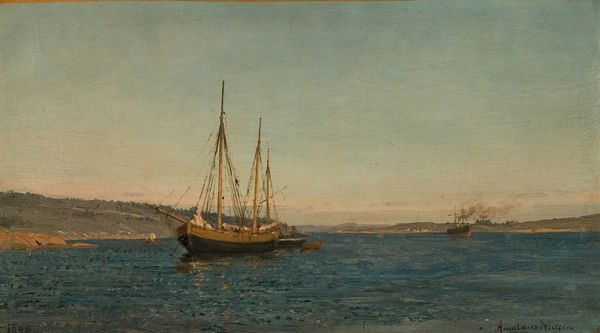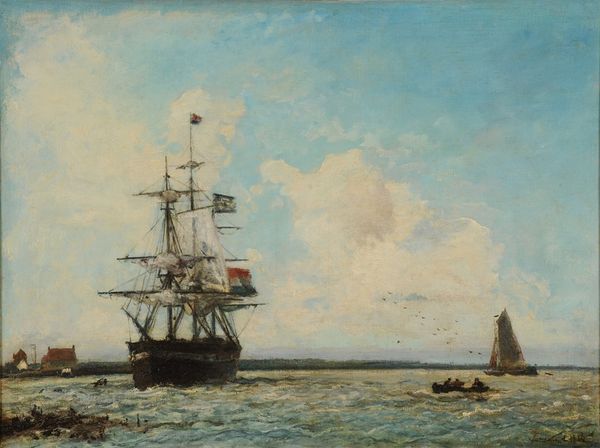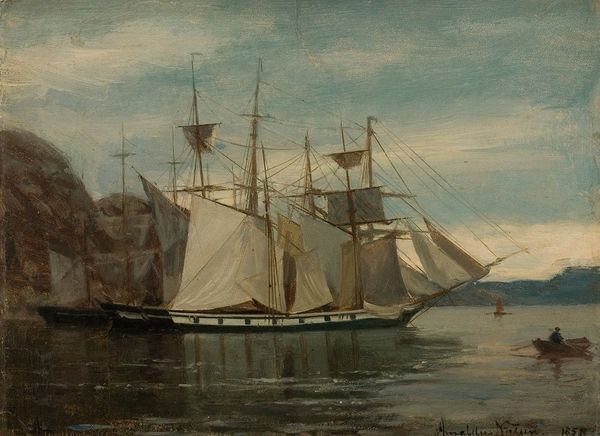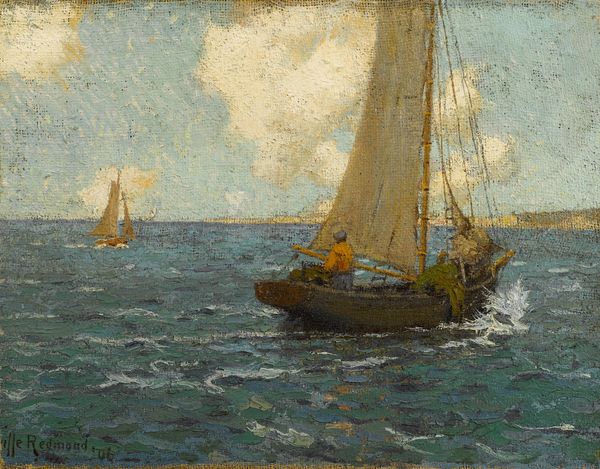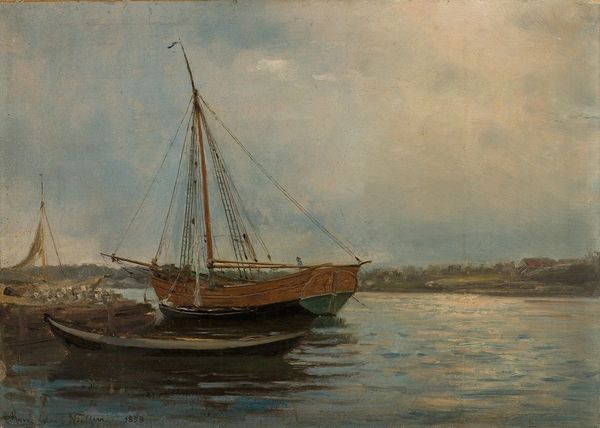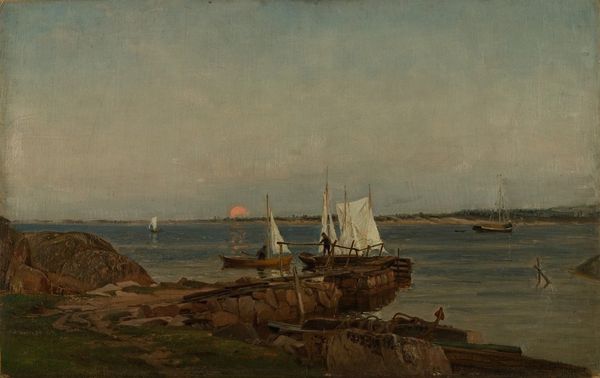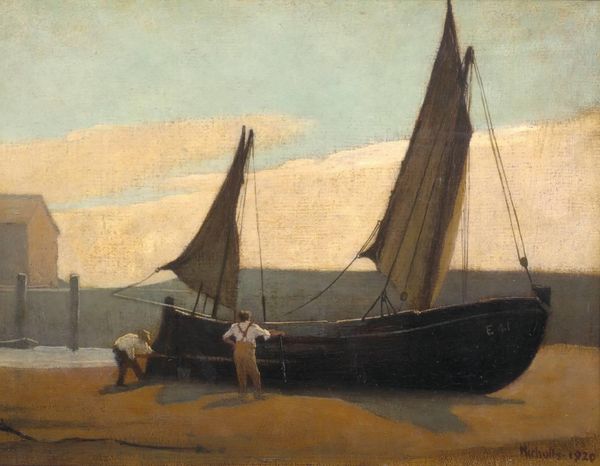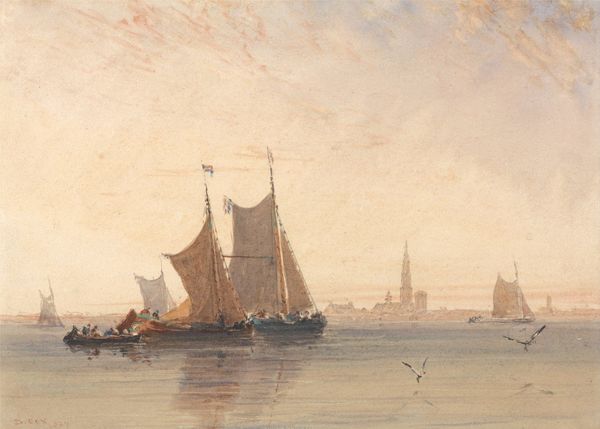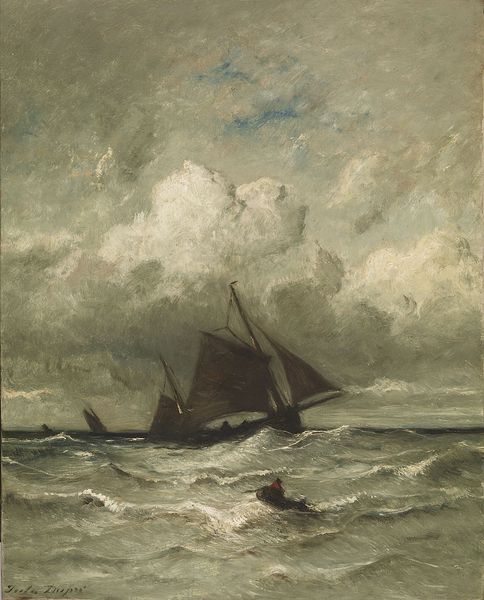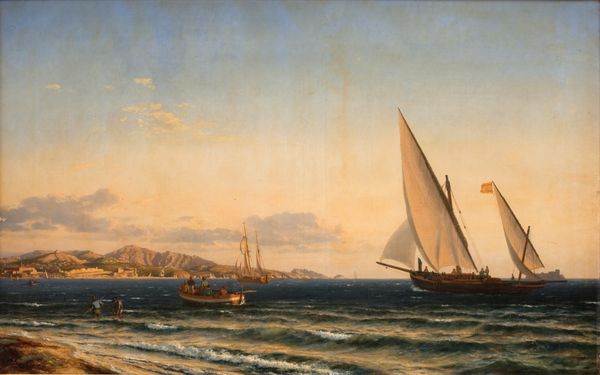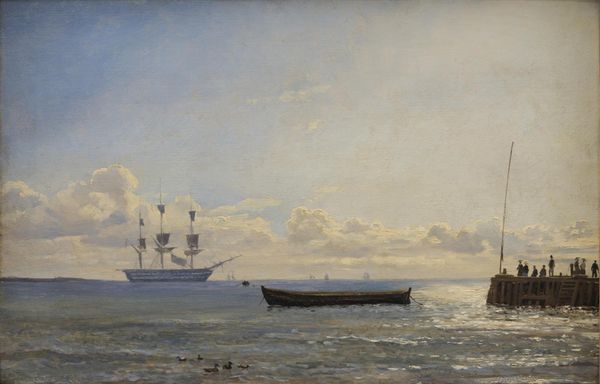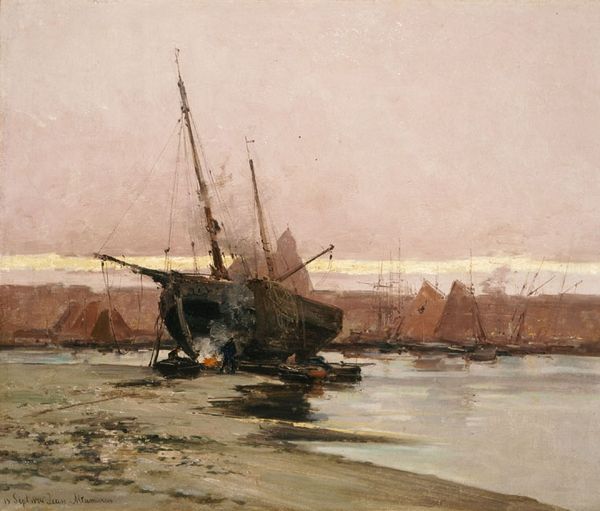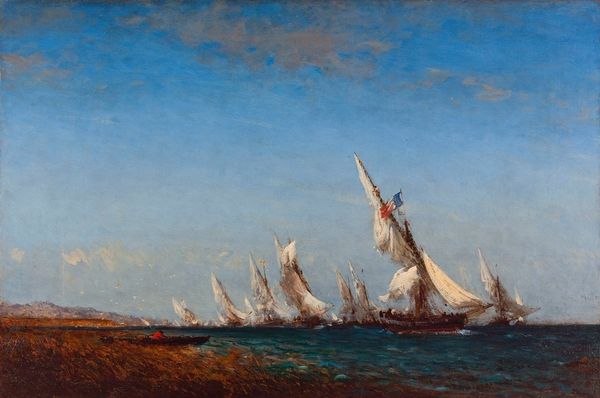
Copyright: Public Domain: Artvee
Editor: This is "Fra Hvaler," painted in 1898 by Amaldus Nielsen. It's an oil painting depicting a seascape. I’m struck by how calm and serene it feels, despite the activity on the water. What do you see in this piece? Curator: I see a vessel cutting through the waves. This vessel is not simply sailing; it's carrying a rich tapestry of symbolism related to journeys and passages. Notice how Nielsen captures the light reflecting off the water. The reflections almost seem to create a path. Do you think this path invites us into a realm beyond the everyday? Editor: I do. It’s like an invitation to explore. Are the other ships further in the distance important? Curator: The inclusion of these secondary vessels is crucial. It presents a continuity, a shared cultural narrative of maritime travel that's both ancient and ever-present. They represent the enduring relationship between humanity and the sea, and it acts as an emotional anchor for our memory of seafaring, trade and exploration. Think of the psychological implications, too. Editor: So, the image taps into our collective memory? I see how that path is really significant in that context. Curator: Precisely! This connects us to something larger than ourselves – the shared human experience of navigating the unknown, both literally and metaphorically. The interplay of light and water, and the ships against the distant horizon serve to activate this emotional and cultural depth, a resonant cultural chord. What lasting effect did that analysis have on your interpretation? Editor: I originally thought of it just as a pretty picture, but now I see it’s much more about connecting to history and the human experience through symbols. Thanks, that’s fascinating! Curator: And for me, a continued reflection on memory and journey makes me excited about studying visual arts even more.
Comments
No comments
Be the first to comment and join the conversation on the ultimate creative platform.
